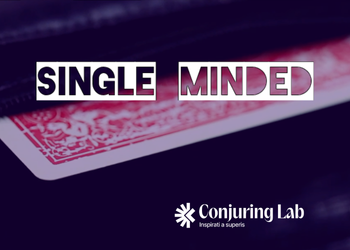[Tour] Extreme Poker
- Pas de pub non magique pour les membres du Cercle VM. Clique ici pour en savoir plus !
-
Messages
-
Le Black Magic de VM a débuté et avec ce Bon Plan VM, en plus du tour Cot Cot Card, vous recevez aussi les explications pour ce très bon tour de @Paul PICHARD (PaulMagie) : 🚨 Attention, c'est jusqu'à lundi minuit ici https://www.virtualmagie.com/etiquette-produit/vm-black-magic/
-
Par Christian DELAMORINIERE · Publié le
Résumé pour ceux qui ne sont pas prêts à se morfler cette vidéo aussi longue qu'un film : -
✨ VM BLACK MAGIC – L’ÉVÉNEMENT MAGIQUE DE L’ANNÉE ! ✨ 🎩 Offres Exceptionnelles jusqu’à Lundi Minuit ! ⏰ L’idée est simple : Profite de remises immédiates exceptionnelles sur une sélection premium de contenus magiques. Ne laisse pas passer cette opportunité unique ! 🛒 Profitez-en immédiatement avant qu’il ne soit trop tard ! Découvre toutes les offres en cliquant ici 👉🏻 🎁 2 CADEAUX OFFERTS (DVD/Tours au choix) 💎 Cercle VM Rubis – Accède à la fameuse Chambre des Secrets ! En rejoignant le Cercle VM Rubis, bénéficie de : ✨ Un millier de tours expliqués en replays – Une bibliothèque magique incomparable 💰 Plus de 500€ de cadeaux exclusifs à découvrir 🛍️ Vends tes produits d’occasion directement dans la communauté 🎁 2 DVD ou tours offerts avec ton adhésion (📋 Découvre la liste complète des cadeaux disponibles en cliquant ici) Découvre en vidéo toute l'offre du Cercle VM ici 👉🏻 🔥 -30% SUR LES CONTENUS PREMIUM 🎬 Conférences VM en vidéo Accède aux secrets des plus grands magiciens : Mansour, Onfroy, Losa, Ammar, Evans, Harlan, Wilson, Gallardo, Chrétien, Rosemont… et bien d’autres ! 🎴 VOD de Philippe MOLINA Maîtrise les techniques d’un expert avec : Bébel, Vaquera, Markobi, Stratège… ♠️ Tours de cartes de Philippe MOLINA Perfectionne ton art avec : Huile & Eau, RAID Tue-Mouches, Cash-Cash… et plus encore ! ⚡ -50% SUR LES EXCLUSIVITÉS 🎥 Tours en vidéos produits par VM Découvre les créations de Raven, Garcia, Guastaferro… à prix imbattable ! 📄 Tours et notes de conférence en PDF en français Plonge dans les notes des maîtres : Bloom, Evans, Ammar, Riboulet, Rawlins, Onfroy… 🎄 SPÉCIAL NOËL – LIVRES & TOURS D’EXCEPTION 📚 Faites-vous plaisir avec des ouvrages de référence ! Pour vous ou pour offrir, découvrez une sélection exceptionnelle de livres et tours de magie avec réductions et cadeaux exclusifs : 📖 Retour aux Sources – Le livre incontournable pour redécouvrir les fondamentaux : Frais de Port offerts dès le niveau 1 🎯 C’Art Force – une vidéo offerte 🧠 Les Cahiers du Mentalisme – Plongez dans l’univers fascinant du mentalisme 🎁 The Mental Mysteries (VF) de William W. LARSEN Sr. + spécial Black Magic : le jeu chiffré 1900 offert si achat d’au moins trois exemplaires de la revue (donc inclus pour l'achat du lot) 🎁 Réductions spéciales + cadeaux offerts sur ces pépites pour compléter votre collection ou gâter vos proches à Noël ! ⏰ DERNIÈRE CHANCE – OFFRE LIMITÉE JUSQU’À LUNDI MINUIT ! Ne passe pas à côté de ces réductions exceptionnelles. C’est MAINTENANT ou jamais ! 🛒 Profitez-en immédiatement avant qu’il ne soit trop tard ! Découvre toutes les offres en cliquant ici 👉🏻
-
-
Statistiques des membres
-
Statistiques des forums
-
Total des sujets84.5k
-
Total des messages681.1k
-




(2).gif.df27bc07cef0e29200c3a3b4a6f86666.gif)



.gif.43fd222fbabeddb5a351e8e6c6887e3f.gif)
Choregraphiedesmains(1).gif.df6707e1d50c58de62d64dd474099a4a.gif)
Recommended Posts
Rejoins la conversation !
Tu peux publier maintenant et t'enregistrer plus tard. Si tu as un compte, connecte-toi maintenant pour publier avec ton identité.